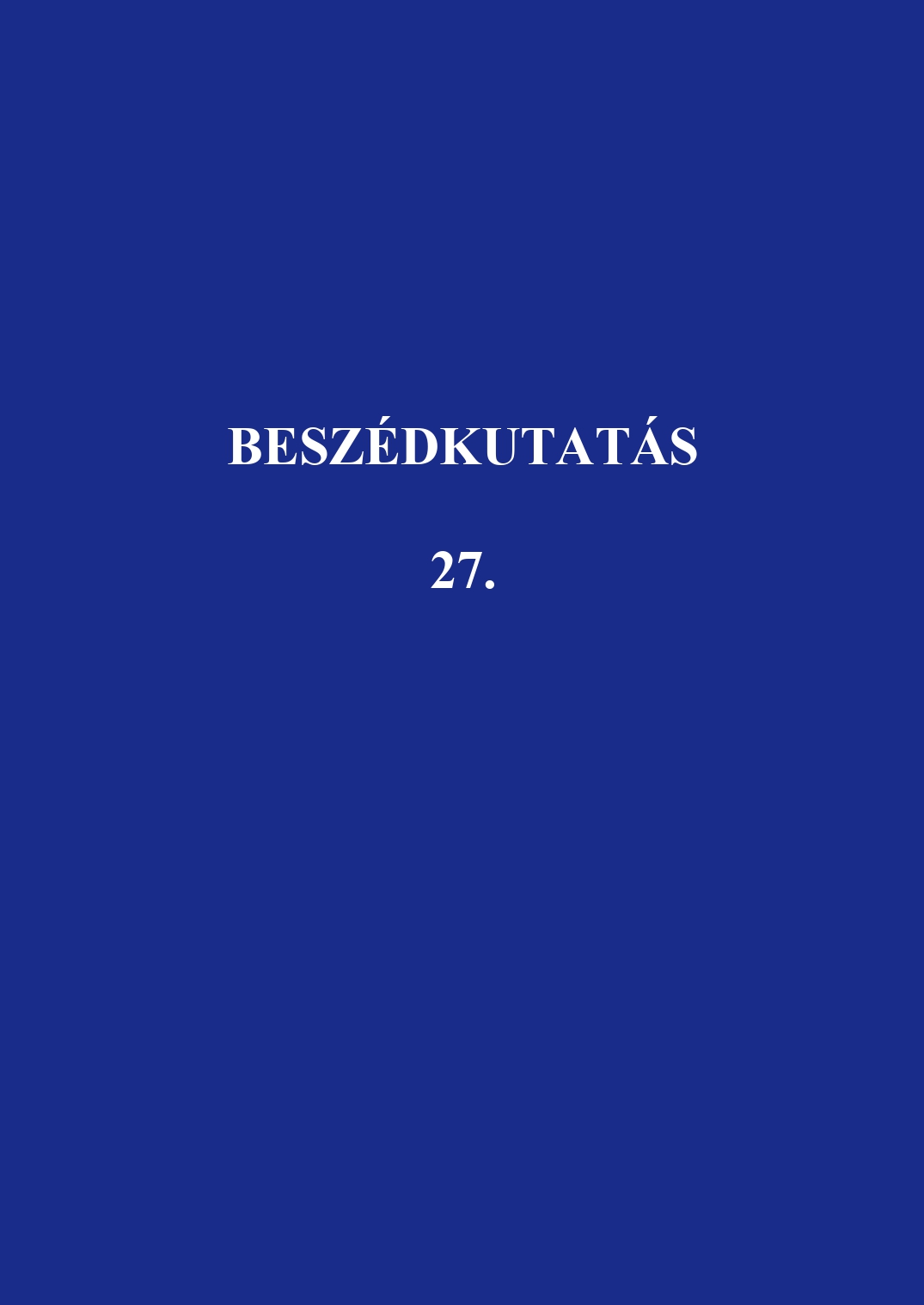Explozívák és az őket megelőző magánhangzók időtartama modális fonációval létrehozott beszédben és suttogásban
Absztrakt
The duration of stops and preconsonantal vowels in modal voicing and
whispering
Whispering is a common, natural way to produce speech, but the way speech sounds are produced in whisper is fundamentally different from that of “normal” speech, i.e., modal voice. In modal voice, the vibration of the vocal folds creates the source of the speech signal, and its presence or absence makes the main difference between voiced and voiceless obstruent consonants in Hungarian. In whisper, however, the vocal folds are abducted so that they do not vibrate, and the air passes between the arytenoid cartilages creating audible turbulent noise, irrespective of the (phonological) voicing of the speech sound produced. Therefore, the question arises, if we can distinguish voiced and voiceless obstruent phonemes in whisper. And if we are able to distinguish voiced and voiceless obstruents, what types of (secondary) coustic cues of voicing may aid our perception to do so? In modal voice, duration of the consonants and duration of the preconsonantal vowels may serve as secondary acoustic cues to voicing, as voiced obstruents are shorter than their voiceless counterpart, and vowels preceding voiced obstruents are longer than those preceding the obstruents’ voiceless counterpart. Previous studies suggest that these acoustic cues may also be sustained in whisper.
The present study investigated the duration of voiced and voiceless stops and the duration of vowels preceding these stops in modal speech and whispering in Hungarian. We hypothesized 1. that voiced stops are shorter, than their voiceless counterpart both in modal speech and whispering, and 2. that the vowels before voiced stops are longer than those before the voiceless counterpart of the stops at hand, again both in modal speech and whispering.
In our experiment, participants were asked to read C 1 VC 1 nonsense words in isolation (with an intonation contour characteristic of one-word sentences), where the two consonants were either of /b p d t ɡ k/, and the vowel was either /ɔ/ or /ɛ/ resulting in 12 target sequences. We analysed the second consonant in these sequences. Each nonsense word was repeated by each speaker five times, both in modal voice, and whisper, and the stimuli were presented randomly to the speakers.
The results showed that duration of voiced stops was significantly shorter than that of voiceless stops, both in modal speech and whisper. Furthermore, vowels before voiced stops were significantly longer than those before voiceless stops, again both in modal speech and whisper. We thus concluded, that the duration of stops and preconsonantal vowels may sustain the voicing opposition of stops in whisper, when the primary acoustic correlate of voicing (the vibration of the vocal folds) is not present. On the basis of our results the question arises,
if these durational correlates of voicing may also be used in as cues to voicing in perception.
A Beszédkutatásba leadott tanulmányokat máshol változatlan formában megjelentetni nem lehet. Más személy a szerkesztőbizottság engedélyével és megfelelő hivatkozással használhat fel ábrákat a publikált tanulmányokból.





